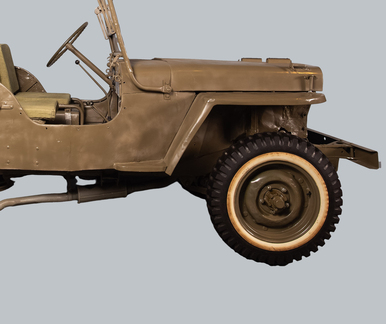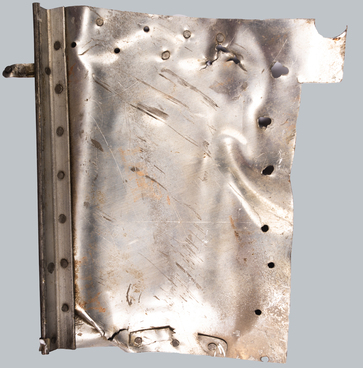The artifact presented in the museum depicts a flying Il-2 attack aircraft, at the helm of which is the test pilot Vladimir Konstantinovich Kokkinaki. The picture in a wooden frame hung in the office of Sergey Vladimirovich Ilyushin, a Soviet aircraft designer.
In 2019, this exhibit was donated to the Museum-Reserve by Irina Valentinovna Kokkinaki, the granddaughter of the famous pilot. The Il-2 was a Soviet attack aircraft of the Second World War. It was developed in the experimental design bureau OKB-240 under the leadership of Sergey Ilyushin.
Every aviation design bureau had test pilots. The main representative of this profession in this Design Bureau was Vladimir Konstantinovich Kokkinaki. He piloted all the models and modifications of the aircraft (both military and passenger) developed in the Ilyushin Design Bureau.
In total, he tested about 100 aircraft models, a huge number of engines and all kinds of aviation devices. Many of them were then mass produced. As soon as the Great Patriotic War began, Vladimir Kokkinaki, at that time a major general of aviation, petitioned to be sent to the front at least as an ordinary pilot, but received a categorical refusal. The chief test pilot of the Ilyushin Design Bureau was needed for other tasks.
Kokkinaki took the refusal very painfully. Every morning he began by searching for references to familiar aviators in newspapers. He continued to test new equipment, new modifications of old aircraft, their weapons, and also advised front line pilots on the most effective use of bomber aircraft.
The Il-2 attack aircraft was used in battles in all theaters of military operations of the Great Patriotic War, as well as in the Soviet-Japanese War. The designers called this aircraft “The Flying Tank”; in turn, the Luftwaffe fighter pilots nicknamed the Il-2 “Concrete Bomber”. According to some Soviet authors, Wehrmacht soldiers called it “The Plague” or “The Black Death”.
The Il-2 became the most massive combat aircraft in the history of aviation. From 1941 to 1949, the industry managed to produce more than 36,000 aircraft.


